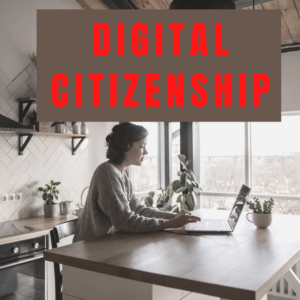 Thanks to the pervasiveness of easy-to-use technology and the accessibility of the internet, teachers are no longer lecturing from a dais as the purveyor of knowledge. Now, students are expected to take ownership of their education, participate actively in the learning process, and transfer knowledge learned in the classroom to their lives.
Thanks to the pervasiveness of easy-to-use technology and the accessibility of the internet, teachers are no longer lecturing from a dais as the purveyor of knowledge. Now, students are expected to take ownership of their education, participate actively in the learning process, and transfer knowledge learned in the classroom to their lives.
In days past, technology was used to find information (via the internet) and display it (often via PowerPoint). No longer. Now, if you ask a fifth grade student to write a report on space exploration, here’s how s/he will proceed:
Understand ‘Digital Citizenship’
Before the engines of research can start, every student must understand what it means to be a citizen of the world wide web. Why? Most inquiry includes a foray into the unknown vastness of the www. Students learn early (I start kindergartners with an age-appropriate introduction) how to thrive in that virtual world. It is a pleasant surprise that digital citizenship has much the same rules as their home town:
Don’t talk to bad guys, look both ways before crossing the (virtual) street, don’t go places you know nothing about, play fair, pick carefully who you trust, don’t get distracted by bling, and sometimes stop everything and take a nap.
In internet-speak, students learn to follow good netiquette, not to plagiarize the work of others, avoid scams, stay on the website they choose, not to be a cyber-bully, and avoid the virtual ‘bad guys’. Current best practices are not to hide students from any of these, but to teach them how to manage these experiences.
That’s harder than it sounds. Children, as new digital citizens, feel anonymous in the vastness provided by the www. They think they can say/do anything and no one will know. But they don’t yet know about something called a ‘digital footprint’ that tracks every step an individual takes across the internet landscape and–to many people’s horror–forgets nothing. Comments made in high school, pictures posted in college, are available for a future employer to view.
Yes, this isn’t learned in kindergarten. In fact, it takes me six years, a little bit at a time, before students accept these truths as their own.
Research smart
Today’s students are expected to understand how to find information despite the billions (literally) of places to look. For example, if you Google ‘space’, you get over 4 billion hits. That much information is worthless. Students must learn how to whittle this list down to what their specific need is.
Collaborate with others
Where students used to have to find a common time that everyone was free, arrange to meet at someone’s house or the library, and then share notes by copying them and passing out hard copies, now students can sit in their own bedrooms, or on their own laptop or iPad. They collect information, post it to a common document, and edit it collectively in one of many ways:
- via Google Apps–an Education account that allows for real-time editing of documents and enables teachers to see who’s doing what
- through a Wiki–students collect all the information on a required subject in one spot and go from there
- for larger docs, a Cloud-based storage site like DropBox–invite group members to view
- with the teacher via email or the transparency offered by Google Docs (now, Google Drive)
- with subject experts via Skype
Share the wealth
Sharing used to be via PowerPoint slideshows, a written report, a student-driven play, maybe a poster. Technology has opened the floodgates of student creativity. Some Web 2.0 options for publishing are:
- blogs–post the article of all classmates and comment on each other’s work. Then, edit the article to incorporate changes
- website–via Google Sites. If students have Google Apps for Education, this is included and requires no additional set-ups or log-ins.
- wikis–again, a great way to share information, videos, music, widgets of all kinds in a creative manner where presentation is as powerful as the content
- web-based tools (see below)
One of the most gratifying changes in my view as a teacher is the equity afforded by web-based tools. These online programs have flipped the classroom, turning student into teacher, making learning inquiry-driven, encouraging risk-taking rather than memorization. No longer does a family have to shell out hundreds of dollars for software because their children must have it for school. Now, there are a plethora of web-based, mostly FREE tools that record movies, sounds, turn pages into magazines, take polls, brainstorm, test knowledge. Here’s a list of my classroom favorites, including:
- Puzzlemakers (prepare for quizzes)
- Voki (create avatars)
- Shelfari (share books)
It’s not your mother’s classroom–or even yours. With the advent of interactive textbooks and Siri-type voice input devices, who knows where we’ll be in another decade.
Jacqui Murray has been teaching K-18 technology for 30 years. She is the editor/author of over a hundred tech ed resources including a K-12 technology curriculum, K-8 keyboard curriculum, K-8 Digital Citizenship curriculum. She is an adjunct professor in tech ed, Master Teacher, webmaster for four blogs, an Amazon Vine Voice, CSTA presentation reviewer, freelance journalist on tech ed topics, contributor to NEA Today, and author of the tech thrillers, To Hunt a Sub and Twenty-four Days. You can find her resources at Structured Learning.



































